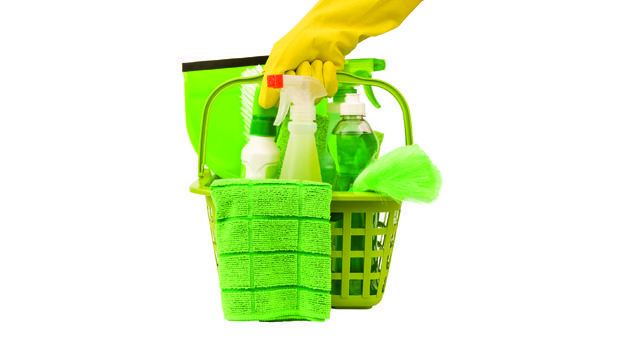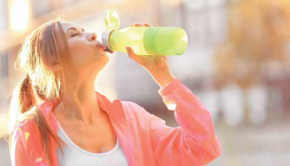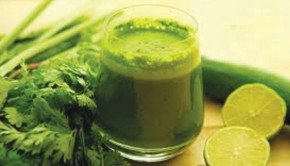Household Cleanse
“Allergies, asthma, lung cancer and heart problems have all been linked to poor indoor air quality.”
~ U.S. EPA
Banish these Five Chemicals for a Domestic Detox
Americans are collectively more aware and educated than just a few years ago about the range of environmental chemicals we inhale and ingest, yet most still live with dangerous substances in their homes,” according to Jen Loui. She is a Leadership in Energy & Environmental Design-accredited professional in St. Louis and an industry expert who writes green curricula for high schools across the country.
Guarding against pollution of indoor air is a good place to start; the U.S. Environmental Protection Agency (EPA) has ranked poor air quality among the leading environmental dangers, reporting links to many common health problems. Here’s how to rid the family home of the top five common household toxins.
Formaldehyde. Traces of this toxin, the same chemical used to embalm the deceased, pervade almost every room. “My clients are often shocked to learn that they likely ingest this toxic, cancer-causing chemical every day of their lives,” says P. Richelle White, a sustainable lifestyle coach and co-owner of Herb’n Maid, a green cleaning and concierge service in St. Louis. “Because formaldehyde is often an ingredient in everyday things like cosmetics, faux wood furniture and conventional cleaning products, they get a daily dose of it.”
Even at low levels, formaldehyde can cause eye, nose, throat and skin irritation; at its most malignant levels, it can cause severe allergic asthma, infertility and lymphoma, according to the Illinois Department of Public Health.
Healthier choices: Switch to all-natural beauty products and cosmetics. At minimum, check that compressed wood fibers don’t use a formaldehyde-based chemical as a binding agent; better yet, choose natural, reclaimed wood for interior surfaces and furnishings.
Polyvinyl chloride. PVC is omnipresent and dangerous. Water bottles, nylon backpacks, pipes, insulation and vinyl tiles generally contain PVC, as well as almost anything waterproofed, such as baby changing mats and mattress covers. PVC usually contains plasticizers called phthalates, which are released over time; it also can chemically combine with other organic materials to produce toxic dioxin byproducts. According to Greenpeace and the Natural Resources Defense Council (NRDC), PVC byproducts and vapors are endocrine disruptors that can mimic or block hormones in the body. In addition, the EPA has linked PVC to serious respiratory problems, immune suppression and cancer.
Healthier choices: Look for PVC-free plastics. When shopping for waterproofed items, choose those with coatings made from polyurethane or polyester.
Phthalates. A 2007 report by the NRDC notes that 12 out of 14 common brands of household air fresheners and room sprays contain phthalates, which people regularly inhale primarily because these chemicals prolong the time that products maintain their fragrance. In studies conducted by the World Health Organization, researchers concluded that consistent exposure to phthalates could increase the risks for endocrine, reproductive and developmental problems. The majority of synthetic air fresheners were found to also emit significant amounts of terpene, a volatile organic compound (VOC) that can react with naturally occurring ozone to create formaldehyde.
Healthier choices: Put boxes of baking soda in cabinets to absorb odors and scent interiors with all-natural oils and potpourri.
Chlorine. According to the American Lung Association, most conventional cleaning products include some chlorine, with large concentrations in bleach. Inhalation of chlorine can irritate the respiratory system; prolonged exposure can lead to lung disease and asthma.
Healthier choices: Purchase chlorine-free cleaning products, especially chlorine-free bleach. Or make inexpensive solutions of white, distilled vinegar mixed with a little lemon for scent for a multipurpose, multi-surface cleaner; try baking soda as a scrubbing powder.
Volatile organic compounds. VOCs are emitted as harmful gases by a wide array of products including paints, lacquers and paint strippers; cleaning supplies; pesticides; carpets and furnishings; office copiers and printers, correction fluids and carbonless copy paper; plus graphics and craft materials that include glues and adhesives, permanent markers and photographic solutions. The EPA calculates that, “Concentrations of many VOCs are consistently higher [up to 10 times] indoors than outdoors.”
Healthier choices: Look for VOC-free products and consider using organic clay paint, which has the added benefit of acting as an absorbent of toxic gases.
Most people spend up to 90 percent of their time indoors, where the air quality can be two to five times (and even up to 100 times) more polluted than the air we breathe outside, according to the EPA. “A simple solution is to open windows for a portion of each day or night to let in fresh air,” advises Loui. Making these choices enables us to protect ourselves better at home.




























